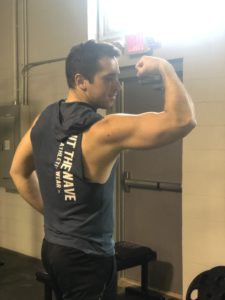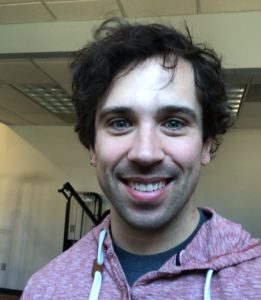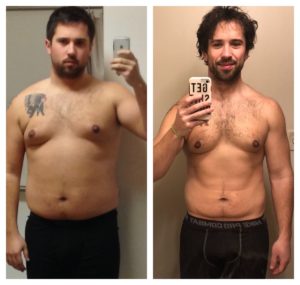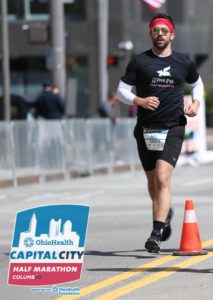Life is complicated enough. Your training program shouldn’t be another stressor on the list. It should take no longer than 15-20 minutes to outline your training program and another 5-10 minutes to write the specific workouts that will fill it. In under 30 minutes you can write a plan to get you from where you are to a totally new you. And if you can’t find 30 minutes in your day, then that’s a whole other topic for a whole other post that we need to talk about.
If you need help in coming up with ideas for exercises and blueprints for your training plan, drop a comment with  what your goal is, and let’s connect to create a plan that leads you to the top of your mountain.
what your goal is, and let’s connect to create a plan that leads you to the top of your mountain.
Keeping it simple, here are the 6 steps to writing a training plan.
- Choose your goal
What should be the easiest step in the process, but can often leave people feeling anxious and more frustrated than any other step… identify what goal you’re going to work on. The reason this stresses people out is overthinking. Too often do I hear things like, “well I want to work on my [belly, arms, legs, etc]”; “I just want to get toned”; “I want to get healthy”. Which are all great, but extremely vague goals. Like I said, I’m not asking you to make it extremely detailed or granular, but you should be more specific than that. Here’s a quick list of the most common goals I’ve seen pop up in consultations and conversations:
“I want to lose weight – 15-20 lbs.”
“I want to build muscle.”
“I want to compete in [event name].”
“I want to fix an injury.”
“I want to build my stamina.”
“I want to get toned all over.”*
*If you choose this goal, what ‘getting toned’ means is that you want to build strength in your muscles to the point that you can see them visibly from the surface. This would basically be a sub-category of “I want to build muscle.” Your focus is creating strength and size in your muscles so that they are visible. To make a muscle visible, you must build it.*
- Choose your rep range
Now that you’ve identified the goal, here comes the easy parts. A quick google search of your goal and the term “rep range” can help you identify what range of repetitions you should be applying to the exercises you will perform in your training sessions. For reference, here’s my list for the top goals seen in the gym:
-Fat Loss: 12-18 reps per set
-Muscle Building/Toning: 8-12 reps per set
-Strength and Power: 2-8 reps per set
I personally like to start at the lower end of the rep range for my goal for my first 2-4 exercises of a session as it’s when I’m most energized and “fresh” to move heavier weight. Then as my session progresses, I increase the reps because I know I won’t have as much strength, so I’ll be able to still perform more work, at a lesser weight. This also comes into play for the next 2 steps.
- Pick 1-2 Main compound movements
A compound movement is an exercise in which more than 1 joint action is being performed. Compare these 2 exercises: A) The Bent Over Dumbbell Row – in which you are bending the arm at the shoulder and elbow to lift a weight from the ground, toward your body. That’s at least 2 joints being used (shoulder and elbow) vs. B) Dumbbell Biceps Curls – where you hold a dumbbell and lift it to your shoulder by bending your elbow. Here you are lifting TO your shoulder, but the only joint MOVING is the elbow.
Compound movements use the most energy and can generally move the heaviest load/weight. These should be the primary focus of your training sessions regardless of goal and be the starting point of each session.
I like 1-2 compound movements minimum for a workout that can include:
-Squat
-Chest Press
-Deadlift
-Pull Up
And any variation of these.
Or you can go a little crazy and combine exercises into a big ol’ multi-joint full body movement such as:
-Turkish Get-ups
-Squat to Overhead Press
-Dumbbell Curl and Press
-Jumping Lunges
Etc.
- Pick 3-5 Accessory movements
After you’ve finished your compound movements, choose from the nearly endless list of additional exercises (which may still be compound) that are known as “accessory” movements. These will be in the higher rep ranges and should be chosen to compliment the compound movements from earlier. For example: If I were to start with Squats, I would add a single leg squat variation such as Bulgarian Split Squats and maybe the always fun Hip Thrusts. These both build muscles of the lower body and will help in different ways to benefit my squats the next time I come back to them.
- Create a Dynamic warm-up
By now you’ve created your workout session that should have probably between 3-8 exercises on it. Knowing what you’re going to do can help you create a dynamic warm-up to start the session that will help you get the body ready for the work ahead. If your program is split into specific body parts, you can warm-up those areas with specific dynamic movements that wake up the joints and muscles with light/no weight so they can prepare for the work they will do during the training session. This should be about 5-15 minutes and increase the heart rate, but only enough to “wake up” the body. This should not be strenuous or energy sapping. A dynamic warm-up will help prevent injury, prepare the body, and help get the mind set on the session ahead.
- Schedule It and Show the heck up!
Finally, probably the second hardest part of the whole sequence – planning and showing up! Though it’s not difficult to do, the mental aspect seems to overwhelm. There’s a saying that you wouldn’t skip a meeting with your boss, so don’t skip a meeting with yourself. There are so many ways to set an alarm/reminder/appointment/etc. in this world that there is literally no excuse for planning the time for you to work on you. Put it on your calendar and show the heck up! Not only will you thank yourself in the moment, but even more so after the workout and program are finished, and you see the results of all your hard work!
Creating a training program doesn’t have to be difficult if you don’t allow it to be. Follow these 6 simple steps to writing a training program and stop making excuses and start kicking butts.


 The Cap City Half Marathon is an annual trek about the Greater Downtown area and surrounding neighborhoods of Columbus, OH. As the race season kicks off in the spring, nestled at the end of April, thousands of people converge on the downtown area of the capital city for a fun filled 13 mile run.
The Cap City Half Marathon is an annual trek about the Greater Downtown area and surrounding neighborhoods of Columbus, OH. As the race season kicks off in the spring, nestled at the end of April, thousands of people converge on the downtown area of the capital city for a fun filled 13 mile run.